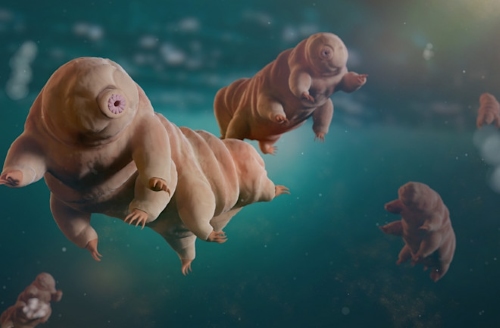Have you ever heard of an animal that can survive in outer space? Sounds like science fiction, right? But it's real! Meet the tardigrade, a microscopic creature that's one of the toughest critters on our planet.
To Tardigrade, people often call them "water bears" or "moss piglets" because, under a microscope, they look a bit like chubby, eight-legged bears or tiny pigs. They are super small – most are smaller than the period at the end of this sentence! A German scientist first noticed these little guys way back in 1773, calling them "little water bears". Later, another scientist named them Tardigrada, which means "slow stepper", because of how they amble along.
What tardigrades makes them so special?

Source: Shutterstock
The really amazing thing about tardigrades is their incredible survival skills. They can handle conditions that would be deadly for almost any other living thing. We're talking about:
- Freezing Cold: Colder than Antarctica? No problem for a tardigrade.
- Intense Heat: Hotter than boiling water? They can take it for a while.
- Crushing Pressure: Even the pressure at the bottom of the deepest ocean trench is manageable.
- Radiation: They can withstand way more radiation than humans.
- No Water: They can dry out completely for years, even decades!
- Outer Space: Yep, they've survived the vacuum and radiation of space!
How do tardigrades survive when there is almost no water at their living place?
Their secret weapon is an amazing ability to go into a state that's almost like suspended animation. When things get really tough – like if their watery home dries up, it gets too cold, or there's not enough oxygen – the tardigrade curls into a tiny, dried-out ball called a "tun".
To do this, it pushes almost all the water out of its body (like, over 95%!) and pulls in its head and legs. Its body processes slow down so much they almost stop. Special proteins inside their cells act like tiny shields, protecting everything while the tardigrade is dried out.
When conditions get better – maybe it rains again – the tardigrade soaks up water and basically comes back to life, ready to go about its business. Scientists think they might be able to stay in this tun state for maybe even a century!
Where can tardigrades be easily seen?
These little water bears live up to their name – they need water to be active. But you can find them almost anywhere there's some water: oceans, lakes, rivers, and even in the thin film of water on moss, lichens (those flaky growths on trees and rocks), and soil in your own backyard. They live from the highest mountains to the deepest seas. Don't worry, though; they don't live on or in people and are totally harmless to us.
What do tardigrades usually eat?
Most tardigrades are like tiny vegetarians. They have sharp mouthparts that look like little needles, which they use to poke into plant cells, algae, or fungi and suck out the juices inside. Some species, however, aren't picky and will eat even smaller microscopic creatures, like tiny worms or even other tardigrades!
Quick Facts Table
Here's a quick rundown of these amazing animals:
| Feature | Details |
| Common Names | Water Bear, Moss Piglet |
| Size | Super small, usually less than 1 millimeter (0.04 inches) |
| Looks Like | Plump, segmented body, 8 legs with claws |
| Habitat | Anywhere with water (oceans, freshwater, moss, soil) |
| Diet | Mostly plant/algae juices; some eat tiny animals |
| Superpower | Surviving extreme conditions by turning into a dried 'tun' |
| Lifespan | Active: Months to ~2.5 years. Tun state: Possibly decades+ |
| Weakness | Can't handle long exposure to very hot water (around 100°F/38°C) when active |
How do tardigrades survive for very long periods?
Incredible Survivors: Tardigrades have been around for a very, very long time – maybe half a billion years! They've survived all five major mass extinctions that wiped out countless other species on Earth. While humans worry about big problems, these tiny water bears just keep on stepping, ready to curl up and wait things out if needed. They might be small, but they are true champions of survival.
Conclusion
Tardigrades, or water bears, are nature's tiny superheroes. Despite their microscopic size, their unique ability to enter a protective "tun" state lets them survive unbelievable extremes, from the vacuum of space to intense heat and cold. They truly are among Earth's most resilient and fascinating creatures.
Comments
All Comments (0)
Join the conversation